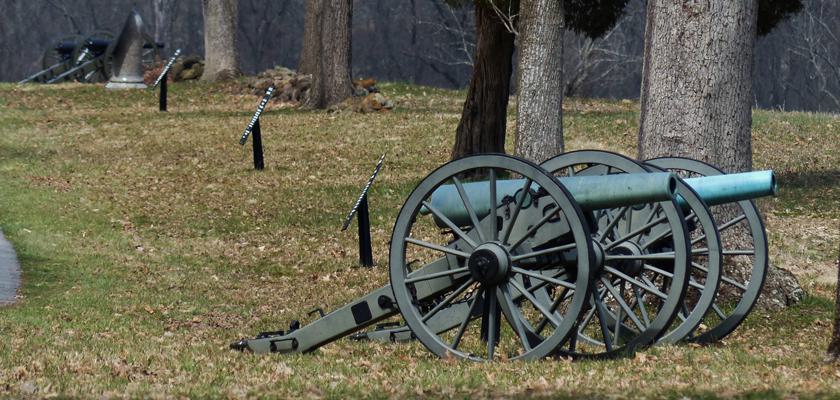On this day in 1863, advance elements of the Confederacy’s Army of Northern Virginia engaged forward elements of the Union’s Army of the Potomac outside of Gettysburg, Pennsylvania. The battle would last for three days. This was General Robert E. Lee’s last full-scale invasion of the north and a major turning point in the American Civil War.
The battle was enormously costly for both sides. Lee brought an army of 71,699 to the battlefield that day, where they faced 93,921 Union troops. The two armies had combined casualties of 51,112.
Major General George Meade was in command of the Army of the Potomac. Meade had just replaced Gen. Joseph Hooker in the wake of the disastrous Battle of Chancellorsville. Despite his successful repulse of the Confederate invasion of the North, President Abraham Lincoln heavily chastised Meade after the battle for not pursuing Lee’s retreating forces and attempting to end the war in one decisive engagement. The battle showed that Lee was beatable and not the invincible military genius that many on both sides of the conflict had begun to view him as prior to the battle.
Lee invaded the north in hopes of winning a major victory, possibly leading to a negotiated peace to end the war. At the same time that Gettysburg was fought, the besieged Confederate army of Gen. John Pemberton was enduring a siege at Vicksburg by Gen. Ulysses S. Grant. The fall of Vicksburg on July 4, 1863, after a siege of 47 days effectively gave the Union control of the entire Mississippi River, dividing the western half of the Confederacy from the eastern half and cutting off a vital supply line. The two defeats in two days combined with the loss of manpower that the Confederacy was in no position to replace raised morale in the North, where many had grown skeptical that the war could be won.
One of the pivotal moments in the battle of Gettysburg was fought on one of the hills overlooking the battlefield – Little Round Top. There, a future Governor of Alabama – Col. William Oates - was narrowly repulsed in his effort to take the hill by the forces of a future Governor of Maine, Col. Joshua Chamberlin. Oates led five regiments up the ascent of Little Round Top, with 4th Texas on the left, then 5th Texas, 4th Alabama, 47th Alabama in the center, and on the right flank the 15th Alabama. Two-thirds of the way to the summit, they were met with volleys of rifle and cannon fire. Two Alabama regiments almost took the summit of the hill, but Chamberlin ordered his 20th Maine, which had run out of ammunition, to launch a desperate bayonet charge. If the Confederates had taken Little Round Top they would have effectively gained control of the left flank as well as the high ground putting the whole Union army in a precarious situation that may have resulted in a Confederate victory.
Gettysburg is immortalized as a national battlefield that draws thousands of visitors every year.
To connect with the author of this story, or to comment, email brandon.moseley@1819News.com.
Don’t miss out! Subscribe to our newsletter and get our top stories every weekday morning.










